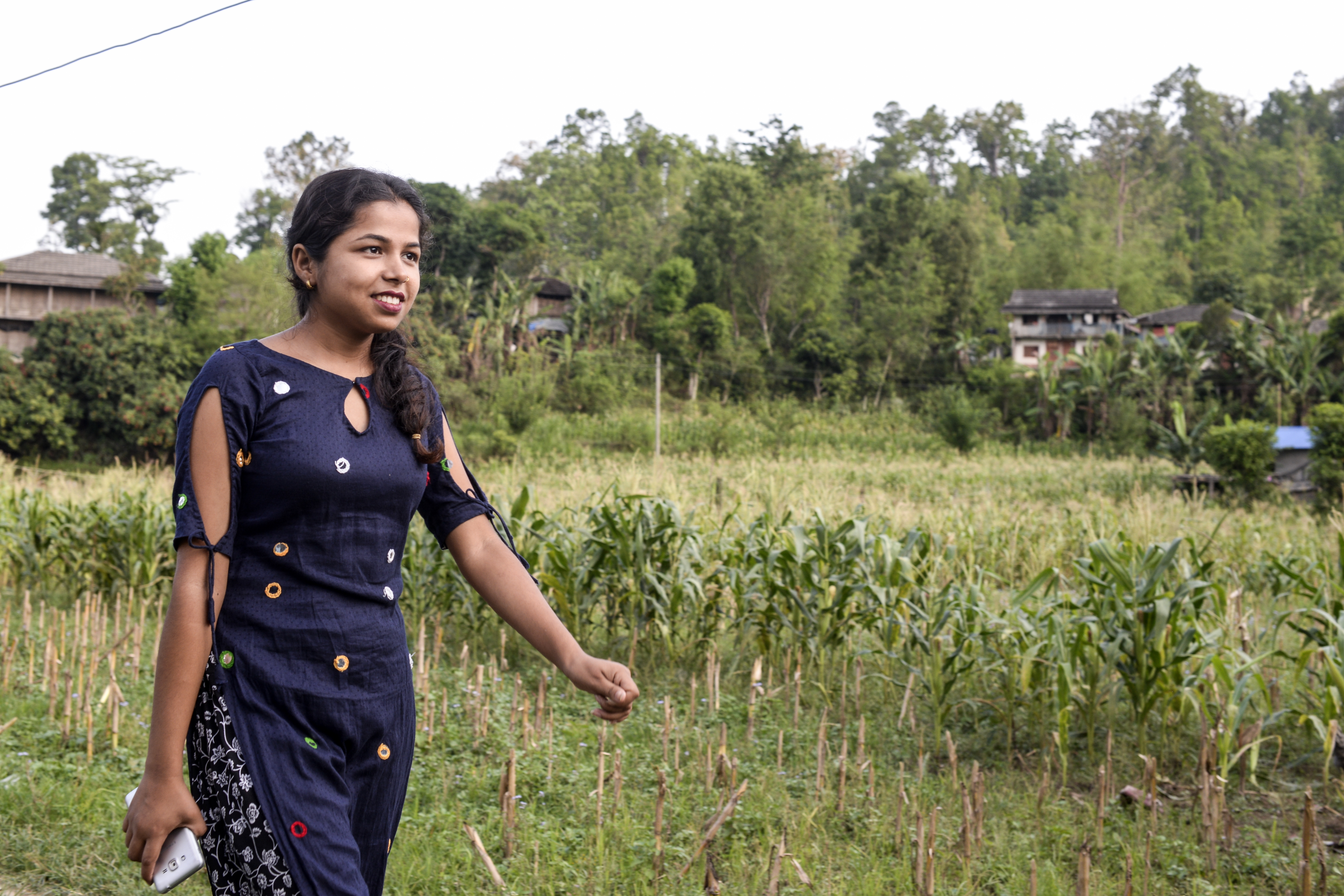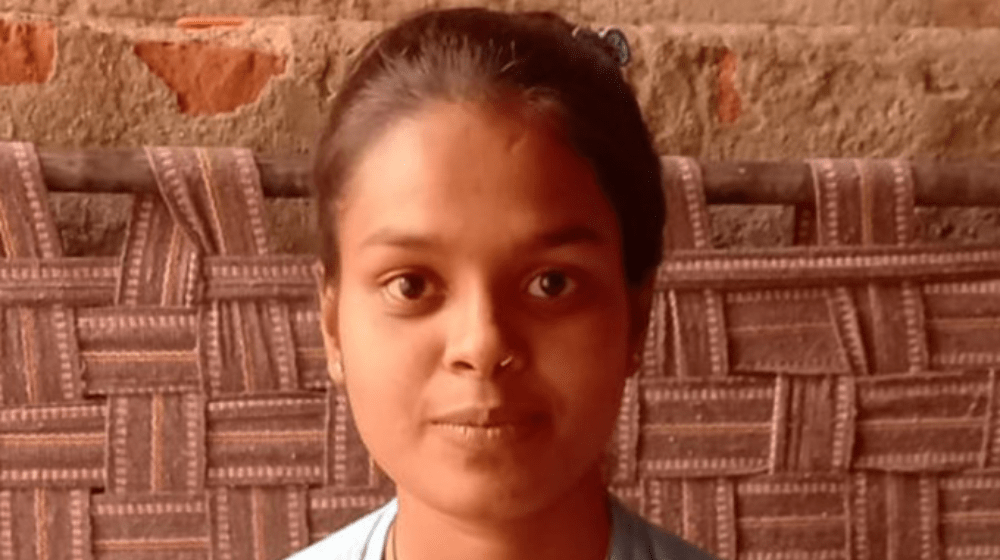Four triumphant stories, fuelled by generous donor support throughout the region, that are igniting a beacon of hope for millions of girls.
Rarely do we get the chance to discuss child marriage and celebrate triumphs, but today is one of those exceptional moments. Meet Aisha, Shila, Bipana, and Ragini – four remarkable young girls who defied child marriage, all thanks to transformative interventions in Bangladesh, Nepal, and India. Their stories are nothing short of extraordinary.
Life is often tough. And when poverty bites families will do what it takes to survive, including resorting to old, damaging traditions such as child marriage. It’s a phenomenon affecting millions of girls. Despite laws against it, the practice remains widespread. Natural disasters, for rural communities in particular, are creating hardships on top of hardships. And then of course there was COVID-19. India, for instance, had halved the prevalence of child marriage, from 47.4 per cent in 2005 to 23.3 per cent in 2021(National Family Health Survey data, 2005-2021). That’s great news. However, the aftershocks lingering today of the COVID-19 pandemic still risk rolling back some of the gains.
While in Bangladesh, the climate crisis is putting more and more girls at risk as families aim to have one less mouth to feed. Bangladesh still has some of the highest rates of child marriage worldwide. More than half of all girls are married before the legal age of 18.
“Whenever a family has problems with money, the first thing they think about [in my village] is stopping their daughter’s education and marrying her off,” says 15-year-old Aisha, who lives in a small riverside village in rural Bangladesh.
Fortunately, thanks to a UNFPA/Plan menstrual-management-kit distribution in her community, accompanied by a child-marriage awareness-raising session (on the harms to the whole village caused by every girl’s end of schooling due to child marriage), Aisha was spared. She is now happily forging forward with her dreams of becoming a nurse.

Bipana (17), from Nepal, managed to stop her own marriage! She had returned from an empowerment training which included negotiation skills, only to learn a marriage had been planned. Bipana managed to keep her panic at bay and explain to her parents the consequences of child marriage. In her words: “It would have ruined my life,” Bipana told them. They listened. Bipana prevailed. The benefits for her family and community will last her, and any of her future children, lifetimes. Adds Bipana: “The education and training transformed me and I [later] shared my new skills with 20 other girls.” The training also included gender-based violence and sexual reproductive health knowledge. Such empowerment enabled Bipana to rally others and officially prevent other child marriages at the district level. Now other families in the village are sending their daughters to the training, keeping them in school and watching proudly as they successfully speak out against gender-based violence.
Life-skills education classes by UNFPA also helped find a solution for Shila’s family and thus prevented her early marriage in Bangladesh. Generation Breakthrough sessions (at a youth centre) triggered Shila’s best friend (who was attending the sessions) to garner support from their school and convince Shila’s family to cancel the wedding planned for this star student.
And finally, in India where great progress has been made, and as UNFPA’s Representative, Andrea Wojnar in India notes: “It is important we take stock of what has and has not worked and keep our focus on reaching the most vulnerable and marginalized adolescents, including those in remote areas. We cannot afford to lose the momentum of the significant progress already made in India.” Which is why interventions such as using mobile phone edutainment are so encouraging. Take Ragini, a fearless volunteer with Naubat Baja, a UNFPA-backed mobile edutainment channel in Rajasthan, India, dedicated to adolescent well-being. When Ragini discovered a 14-year-old girl in her community facing a forced marriage with a 40-year-old man, she sprang into action. Despite potential risks to her family's standing in the community, Ragini sought help from her school and, together, they activated the Child Helpline. Authorities, including the police, stepped in just in time to prevent the child marriage, ensuring the girl's dreams of education were not crushed. Ragini's unwavering determination saved a girl's future.
The triumphant stories of Aisha, Shila, Bipana, and Ragini are only a few of the lives changed for the better, through a Global Programme to End Child Marriage implemented by UNFPA and UNICEF, which is the first United Nations-led joint initiative since 2016, designed with a focus on promoting the rights of adolescents to delay marriage, supporting adolescents to realize their rights by engaging with communities, and strengthening systems that deliver critical services to adolescents, including health and education.
Funded by the Governments of Belgium, Canada, Italy, the Netherlands, Norway, the United Kingdom, the European Union, and Zonta International, the Global Programme has reached 21 million girls with life-skills and comprehensive sexuality education, supported 1.2 million girls to enrol in, return to, and/or remain in school, engaged 58 million community members in dialogues on gender equality and child marriage, and supported 70,000 prevention and care service delivery points to provide quality health, education and protection services for girls.
And so, on International Day of the Girl Child, we celebrate the programme’s achievements. Combined they have ignited a beacon of hope for millions of girls. While there's still much work ahead, the inspiring journeys of Aisha, Shila, Bipana, and Ragini serve as undeniable proof that progress is not only possible but gathering momentum.
Let's continue this journey together!


